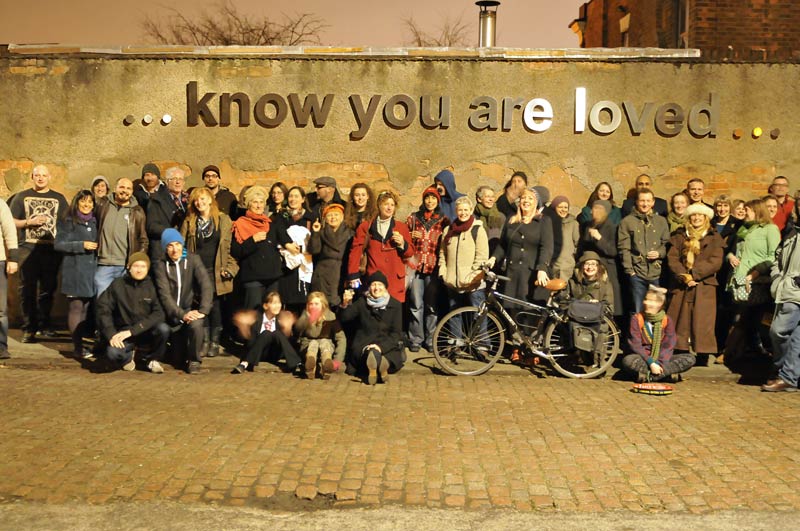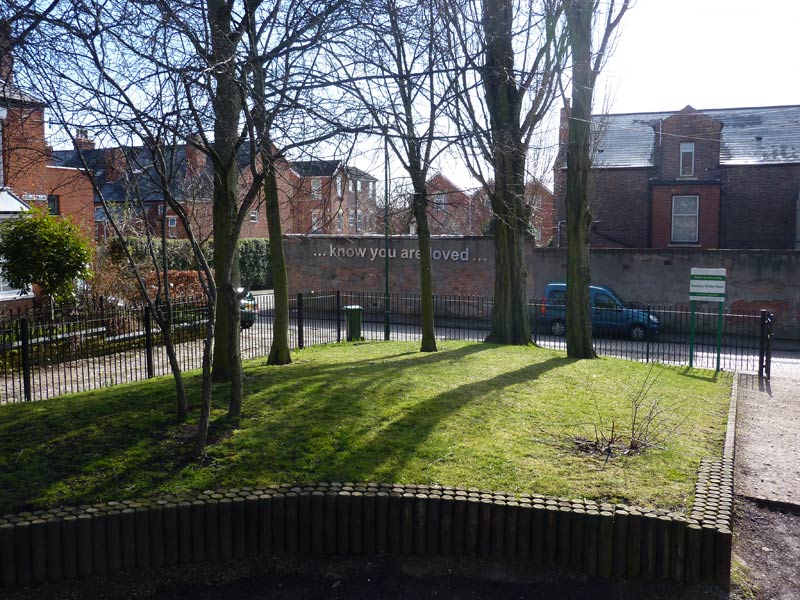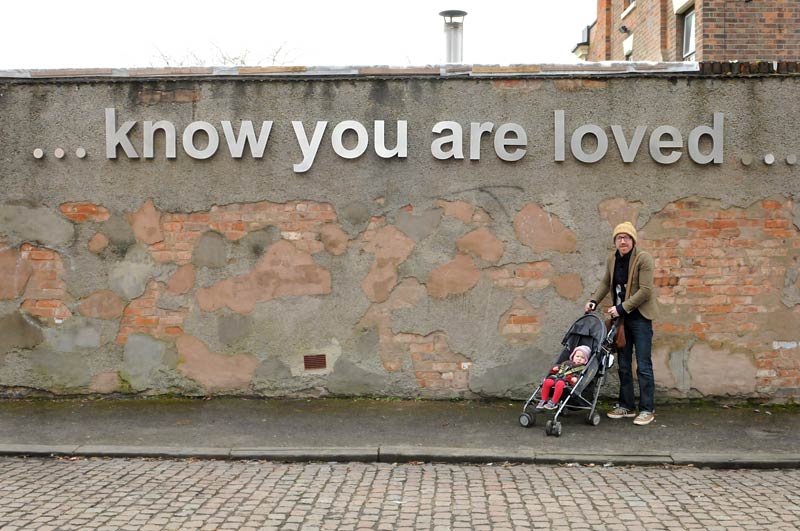Hedley Street : Notions of Value is a project by curator Kate Stoddart & John Newling together with Sherwood Rise Residents Association and funded by Arts Council England.
Kate had invited me to consider a work, temporary in nature, for a long wall that seemed to act as a kind of border. The sense of the area was that of a secret place entered through a small street revealing a square consisting of a small park bordered along its edges with houses. My first real encounter with the site and community was during the annual ‘stuff of life’ festival. I was really amazed by the event itself. Food, live music stalls and much more paid testament to a community that seemed to know that celebrating the stuff of life in its own backyard was an important part of consolidating friendships and making new ones. It was the kind of ‘meet the neighbours’ events that can have a startling effect on community and place.
With the wall work in mind Kate had set up a stall to assist in my collection of ‘values’ from people in the area and others visiting the area. By the end of the day I had collected several hundred texts about what people valued. As is often the case with these projects I was taken by the generosity with which people partook in the discussions, thoughts and texts in relation to what they valued.
I have long been involved in looking at what we ‘value’ in our everyday lives. I do believe that by better understanding these values we can understand such values as a kind of antidote to the relentless invitations to consume. Given that all ecologies, especially our wellbeing, are endangered when competition outstrips resources it may be that understanding what we value could be of benefit. Part of my practice is to try to comprehend what it is to construct a ‘social soil’ that truly reflects our needs and wants without plundering the earth’s finite resources.
I do think art can occasionally shift our perceptions of social possibilities in a culture that seems reticent to advocate such possibilities. Whilst I have always been hesitant to claim any particular function for art I do know that it can induce a momentary reflection within our everyday encounters that can be shift or at least wobble our sense of ourselves.
This is one of several similar works in relation to value that I am forming. I am interested in how values may change in differing places, cities and countries. This may be one of emphasis but may also reveal extremely different values between communities that may be only a few miles apart.
Having collected and transposed the texts I started to look for commonly reoccurring actions, names and places within the text. It was very clear that I had been talking with a creative community that was confident in its sense of itself. Dominant objects were musical instruments and sound in general; in particular the sound of children playing. This may have been influenced by the event I was attending, live music and many children laughing, but I got a strong sense from the text that this community valued abstract senses over objects. Many texts referred overtly and directly to others son, daughter, husband, wife, and partner.
I started to construct text from the analysis I was making. I was struck how the list seemed to reflect some of the ideas of the Greek philosopher Epicurus.
Epicurus believed the purpose of philosophy was to have a happy and tranquil life. He advocated that such a life was characterized by peace and freedom from fear and the absence of pain. He advocated that such an attainment was possible by living a self-sufficient life surrounded by friends. In many ways Epicurus started that it is the pleasures of life that are the only important value and that such pleasure can found through communities and friends. I sensed from the text that the ‘stuff of Life’ festival was overtly, probably unconsciously, similar to these thoughts from Epicurus. Having spent many hours studying the list of values, constructing short texts from the list I began to know the text. I started to want to place in this space a text that could be seen as a kind of inspiration of value, a value of values that the community had inspired.
At the end of a day’s hard work on the project I wrote …Know you are loved…as a possible text to occupy the wall. The following morning I returned to the text and it felt right for the place, the space and the people. The thought of a large text touching the wall that wore its history in small scars across its surface saying
…Know you are loved…
Felt exciting and, somehow, right.
Images: Jo Wheeler


